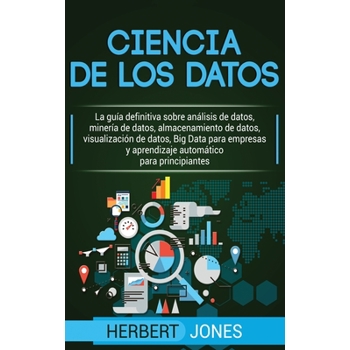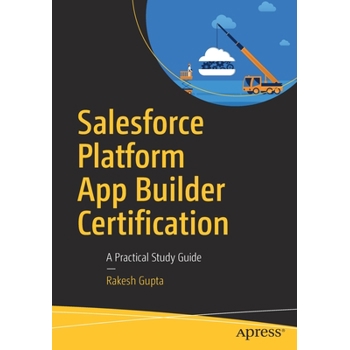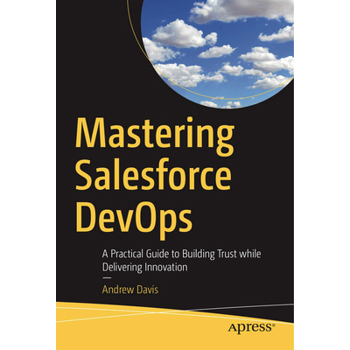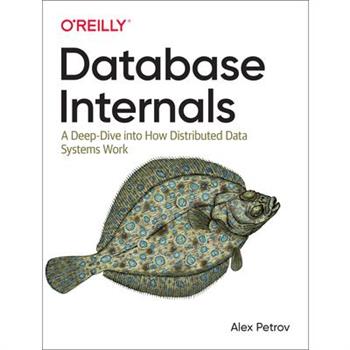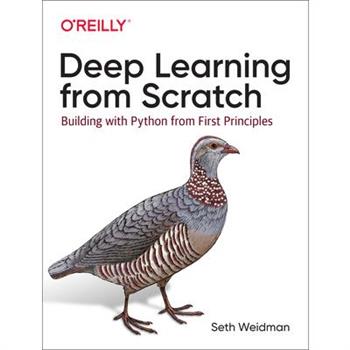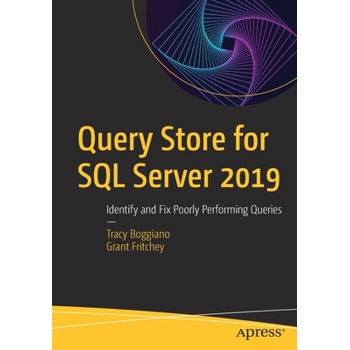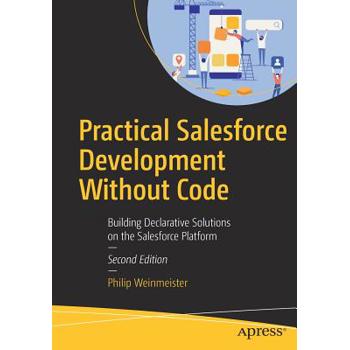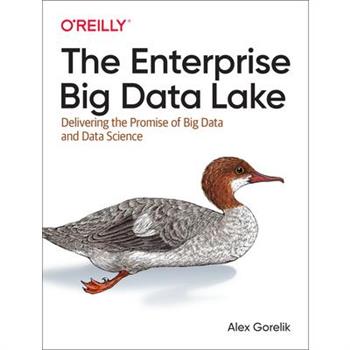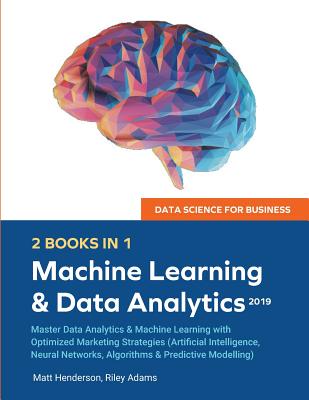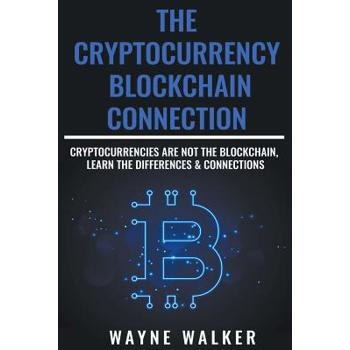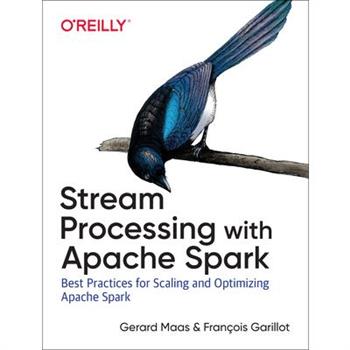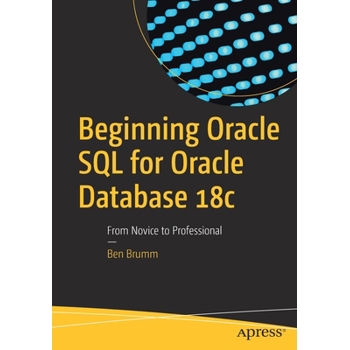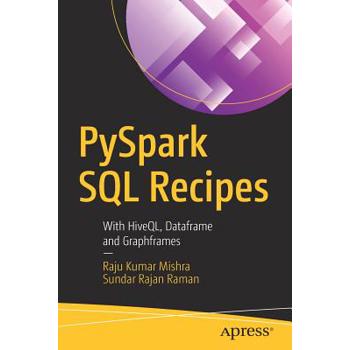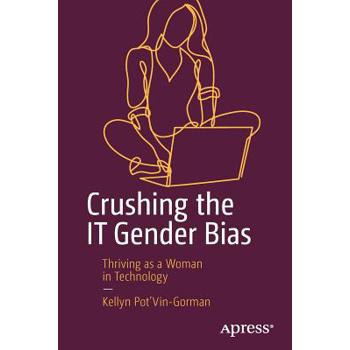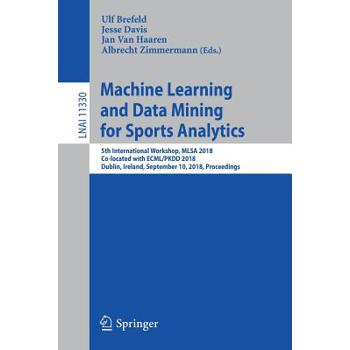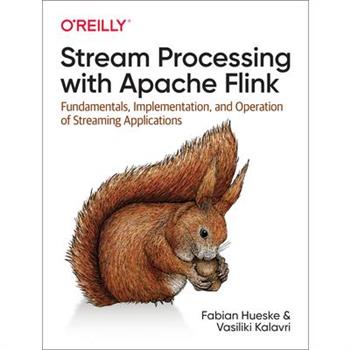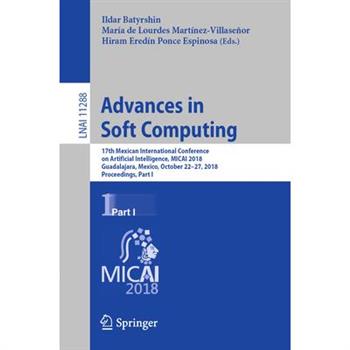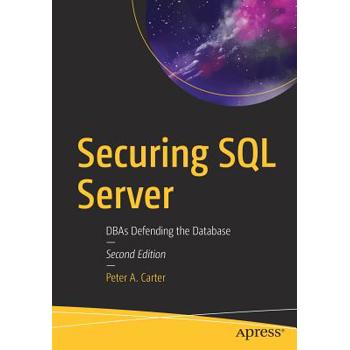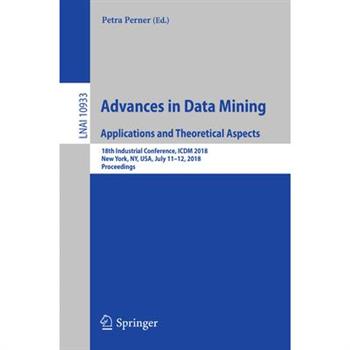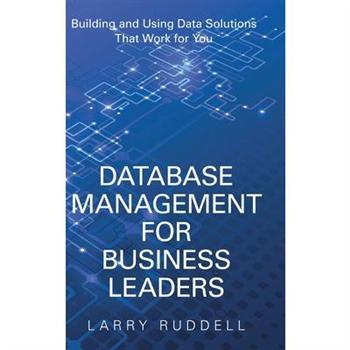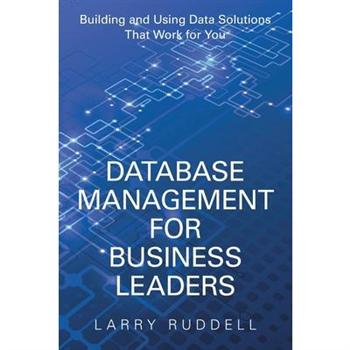Ciencia de los datos
2 manuscritos completos en 1 libro Ciencia de los datos: Lo que saben los mejores cient穩ficos de datos sobre el an獺lisis de datos, miner穩a de datos, estad穩sticas, aprendizaje autom獺tico y Big Data - que usted desconoce Ciencia de Datos para Empresas: Modelo Predictivo, Miner穩a de Datos, An獺lisis de Datos, An獺lisis de Regresi籀n, Consulta de Bases de Datos y Aprendizaje Autom獺tico para Principiantes Los datos recopilados de mediciones cient穩ficas, clientes, sensores de IoT (Internet de las cosas), etc., son muy importantes solo cuando uno puede extraer un significado de ellos. Los cient穩ficos de datos son profesionales que ayudan a revelar desaf穩os interesantes y gratificantes de explorar, observar, analizar y a interpretar datos. Para hacerlo, aplican t矇cnicas especiales que les ayudan a descubrir el significado de los datos. Convertirse en el mejor cient穩fico de datos es algo m獺s que dominar las herramientas y t矇cnicas anal穩ticas. El verdadero problema radica en la forma de aplicar la capacidad creativa como expertos cient穩ficos de datos. Este libro le ayudar獺 a descubrirlo y llevarlo hasta all穩. El objetivo de "Data Science: What the Best Data Scientists Know About Data Analytics, Data Mining, Statistics, Machine Learning, and Big Data - That You Don't" (Ciencia de datos: lo que saben los mejores cient穩ficos de datos sobre el an獺lisis de datos, miner穩a de datos, estad穩sticas, aprendizaje autom獺tico y Big Data - que usted desconoce) es ayudarle a expandir sus habilidades de ser un cient穩fico de datos b獺sico a convertirse en un cient穩fico de datos experto listo para resolver problemas centrados en datos del mundo real. Al final de este libro, aprender獺 c籀mo combinar Aprendizaje autom獺tico, Miner穩a de datos, an獺lisis y programaci籀n, y extraer conocimiento real de los datos. A medida que lo lea, descubrir獺 importantes t矇cnicas estad穩sticas y algoritmos que son 繳tiles para aprender la Ciencia de los Datos. Cuando haya terminado, tendr獺 una base s籀lida que lo ayudar獺 a explorar muchos otros campos relacionados con la ciencia de datos. La primera parte de este libro incluye: Lo que la ciencia de datos es Lo que se necesita para convertirse en un experto en Ciencias de Datos Las mejores t矇cnicas de miner穩a de datos para aplicar en datos Visualizaci籀n de datos Regresi籀n log穩stica Ingenier穩a de datos Aprendizaje autom獺tico Anal穩tica de Big Data 癒Y mucho m獺s! Al leer la segunda parte de este libro, usted: 聶Qu矇 es la Ciencia de Datos? C籀mo funcionan los Grandes vol繳menes de datos y por qu矇 es tan importante C籀mo hacer un an獺lisis exploratorio de datos Trabajar con miner穩a de datos C籀mo extraer texto para obtener los datos. Algunos algoritmos asombrosos de aprendizaje autom獺tico para ayudar con la Ciencia de Datos C籀mo hacer modelado de datos Visualizaci籀n de datos C籀mo utilizar la Ciencia de Datos para ayudar a que su negocio crezca Consejos para ayudarle a comenzar con la Ciencia de Datos 癒Y mucho, mucho m獺s! Obtenga este libro ahora para conocer m獺s sobre la Ciencia de los datos y Ciencia de Datos para empresas!
Ciencia de los datos
聶Sab穩a usted que el valor del uso de datos ha aumentado las oportunidades de empleo, pero que actualmente hay pocos especialistas?En estos d穩as, todos son conscientes del papel que pueden desempe簽ar los datos, ya sea en una elecci籀n, en un negocio o en la educaci籀n. Pero, 聶c籀mo puede empezar a trabajar en este amplio campo interdisciplinario ocupado con tanta propaganda?Este libro, "Data Science: What the Best Data Scientists Know About Data Analytics, Data Mining, Statistics, Machine Learning, and Big Data - That You Don't" (Ciencia de datos: lo que saben los mejores cient穩ficos de datos sobre el an獺lisis de datos, miner穩a de datos, estad穩sticas, aprendizaje autom獺tico y big data - que usted desconoce), le presenta un enfoque paso a paso de la ciencia de datos, as穩 como los secretos solo conocidos por los mejores cient穩ficos de datos. Combina la ingenier穩a anal穩tica, aprendizaje autom獺tico, Big Data, miner穩a de datos y estad穩sticas en un m矇todo f獺cil de leer y digerir.Los datos recopilados de mediciones cient穩ficas, clientes, sensores de IoT (Internet de las cosas), etc., son muy importantes solo cuando uno puede extraer un significado de ellos. Los cient穩ficos de datos son profesionales que ayudan a revelar desaf穩os interesantes y gratificantes de explorar, observar, analizar y a interpretar datos. Para hacerlo, aplican t矇cnicas especiales que les ayudan a descubrir el significado de los datos. Convertirse en el mejor cient穩fico de datos es algo m獺s que dominar las herramientas y t矇cnicas anal穩ticas. El verdadero problema radica en la forma de aplicar la capacidad creativa como expertos cient穩ficos de datos. Este libro le ayudar獺 a descubrirlo y llevarlo hasta all穩.El objetivo de "Data Science: What the Best Data Scientists Know About Data Analytics, Data Mining, Statistics, Machine Learning, and Big Data - That You Don't" (Ciencia de datos: lo que saben los mejores cient穩ficos de datos sobre el an獺lisis de datos, miner穩a de datos, estad穩sticas, aprendizaje autom獺tico y Big Data - que usted desconoce) es ayudarle a expandir sus habilidades de ser un cient穩fico de datos b獺sico a convertirse en un cient穩fico de datos experto listo para resolver problemas centrados en datos del mundo real. Al final de este libro, aprender獺 c籀mo combinar Aprendizaje autom獺tico, Miner穩a de datos, an獺lisis y programaci籀n, y extraer conocimiento real de los datos. A medida que lo lea, descubrir獺 importantes t矇cnicas estad穩sticas y algoritmos que son 繳tiles para aprender la Ciencia de los Datos. Cuando haya terminado, tendr獺 una base s籀lida que lo ayudar獺 a explorar muchos otros campos relacionados con la ciencia de datos.Este libro tratar獺 sobre los siguientes temas: Lo que la ciencia de datos es Lo que se necesita para convertirse en un experto en Ciencias de Datos Las mejores t矇cnicas de miner穩a de datos para aplicar en datos Visualizaci籀n de datos Regresi籀n log穩stica Ingenier穩a de datos Aprendizaje autom獺tico Anal穩tica de Big Data 癒Y mucho m獺s! 癒Obtenga este libro ahora para aprender m獺s sobre la ciencia de datos!
Jumpstart Snowflake
Explore the modern market of data analytics platforms and the benefits of using Snowflake computing, the data warehouse built for the cloud. With the rise of cloud technologies, organizations prefer to deploy their analytics using cloud providers such as Amazon Web Services (AWS), Microsoft Azure, or Google Cloud Platform. Cloud vendors are offering modern data platforms for building cloud analytics solutions to collect data and consolidate into single storage solutions that provide insights for business users. The core of any analytics framework is the data warehouse, and previously customers did not have many choices of platform to use. Snowflake was built specifically for the cloud and it is a true game changer for the analytics market. This book will help onboard you to Snowflake, present best practices to deploy, and use the Snowflake data warehouse. In addition, it covers modern analytics architecture and use cases. It provides use cases of integration with leading analytics software such as Matillion ETL, Tableau, and Databricks. Finally, it covers migration scenarios for on-premise legacy data warehouses. What You Will Learn Know the key functionalities of SnowflakeSet up security and access with clusterBulk load data into Snowflake using the COPY commandMigrate from a legacy data warehouse to Snowflakeintegrate the Snowflake data platform with modern business intelligence (BI) and data integration tools Who This Book Is For Those working with data warehouse and business intelligence (BI) technologies, and existing and potential Snowflake users
Salesforce Platform App Builder Certification
New or intermediate developers will want to use this hands-on guide to prepare for the Salesforce Certified Platform App Builder credential, awarded for designing, building, and implementing applications using the declarative customization capabilities of the Salesforce Platform. This is the first book available covering this content, and Salesforce training is very costly. This book is filled with real-world examples and hands-on exercises, enabling you to prepare for the certification exam in a short span of time. Multiple-choice study questions and exercises are included to help you apply what you learn in each chapter.Author Rakesh Gupta explains Salesforce Platform fundamentals, including knowledge about the limitations of the declarative platform and when to use programmatic development versus the AppExchange. Data management and data analytics are covered. And you will learn how to set up organization-wide features that affect the look and feel of your application. Sandbox design patterns and process automation tools available in Salesforce are discussed and you will know when to use them. You will become familiar with a wide array of topics, including designing a mobile app and reporting in Salesforce. What You Will Learn Know when to use declarative development versus programmatic development versus the AppExchangeUnderstand the Salesforce data model, field type (when to use which fields), and how and when to use an external object in SalesforceBe familiar with security and settings in SalesforceSee how easily users can migrate to the Lightning experience from the classic platformImplement business process automation using declarative featuresApply the automation process in SalesforceUtilize Process Builder and manage its power to automate business processesUse sandboxes and deployment tools Who This Book Is For New or intermediate Salesforce developers or anyone in the Salesforce development arena who wants to learn or explore the platform
Database Design and Relational Theory
Create database designs that scale, meet business requirements, and inherently work toward keeping your data structured and usable in the face of changing business models and software systems.This book is about database design theory. Design theory is the scientific foundation for database design, just as the relational model is the scientific foundation for database technology in general. Databases lie at the heart of so much of what we do in the computing world that negative impacts of poor design can be extraordinarily widespread. This second edition includes greatly expanded coverage of exotic and little understood normal forms such as: essential tuple normal form (ETNF), redundancy free normal form (RFNF), superkey normal form (SKNF), sixth normal form (6NF), and domain key normal form (DKNF). Also included are new appendixes, including one that provides an in-depth look into the crucial notion of data consistency. Sequencing of topics has been improved, and many explanations and examples have been rewritten and clarified based upon the author's teaching of the content in instructor-led courses. This book aims to be different from other books on design by bridging the gap between the theory of design and the practice of design. The book explains theory in a way that practitioners should be able to understand, and it explains why that theory is of considerable practical importance. Reading this book provides you with an important theoretical grounding on which to do the practical work of database design. Reading the book also helps you in going to and understanding the more academic texts as you build your base of knowledge and expertise. Anyone with a professional interest in database design can benefit from using this book as a stepping-stone toward a more rigorous design approach and more lasting database models.What You Will LearnUnderstand what design theory is and is notBe aware of the two different goals of normalizationKnow which normal forms are truly significant Apply design theory in practice Be familiar with techniques for dealing with redundancy Understand what consistency is and why it is crucially important Who This Book Is ForThose having a professional interest in database design, including data and database administrators; educators and students specializing in database matters; information modelers and database designers; DBMS designers, implementers, and other database vendor personnel; and database consultants. The book is product independent.
The Definitive Guide to Aws Infrastructure Automation
Discover the pillars of AWS infrastructure automation, starting with API-driven infrastructure concepts and its immediate benefits such as increased agility, automation of the infrastructure life cycle, and flexibility in experimenting with new architectures. With this base established, the book discusses infrastructure-as-code concepts in a general form, establishing principled outcomes such as security and reproducibility. Inescapably, we delve into how these concepts enable and underpin the DevOps movement. The Definitive Guide to AWS Infrastructure Automation begins by discussing services and tools that enable infrastructure-as-code solutions; first stop: AWS's CloudFormation service. You'll then cover the ever-expanding ecosystem of tooling emerging in this space, including CloudFormation wrappers such as Troposphere and orchestrators such as Sceptre, to completely independent third-party tools such as Terraform and Pulumi. As a bonus, you'll also work with AWS' newly-released CDK (Cloud Development Kit). You'll then look at how to implement modular, robust, and extensible solutions across a few examples -- in the process building out each solution with several different tools to compare and contrast the strengths and weaknesses of each. By the end of the journey, you will have gained a wide knowledge of both the AWS-provided and third-party ecosystem of infrastructure-as-code/provisioning tools, and the strengths and weaknesses of each. You'll possess a mental framework for how to craft an infrastructure-as-code solution to solve future problems based on examples discussed throughout the book. You'll also have a demonstrable understanding of the hands-on operation of each tool, situational appropriateness of each tool, and how to leverage the tool day to day. What You Will Learn Discover the technological and organizational benefits to infrastructure-as-code solutions Examine the overall landscape of infrastructure-as-code tooling and solutions available to consumers of AWS services See the strengths and weaknesses of these tools relative to one another as examined through hands-on implementation of several solutions Gain hands-on experience, best practices, and tips and tricks learned through several years' real-world experience delivering solutions using these very tools in a wide variety of scenarios Engineer solid solutions that leave room for new requirements and changes without requiring needless refactoring Who This Book Is For DevOps engineers, cloud engineers and architects focused on the AWS ecosystem, software engineers/developers working within the AWS ecosystem, and engineering leaders looking for best practices.
Mastering Salesforce Devops
This practical guide brings DevOps principles to Salesforce development. It fits together two major movements within the IT world: the movement to Software/Platform as a Service (SaaS/PaaS), and the DevOps movement. While SaaS and PaaS allow companies to invest in their core competencies rather than maintain their own infrastructure, the goal of DevOps is to optimize the process of delivering software innovation and value. The release of Salesforce DX in late 2017 unlocks the possibility of a true DevOps workflow on Salesforce. But DevOps is new to the Salesforce world and there is not a widespread understanding of its goals and methods, and so adoption of Salesforce DX is still in the early stages. Mastering Salesforce DevOps explains how to build a powerful and comprehensive DevOps workflow for Salesforce--allowing you to finally deploy the world's most innovative platform using the world's most effective and efficient techniques. It addresses theneed for a comprehensive guide to DevOps for Salesforce, allowing teams to bring proven practices from the IT world to resolve the hardest problems facing Salesforce developers today. What You Will LearnImprove company performance and software delivery performance using Salesforce DXTranslate DevOps concepts into the unique language and practices of SalesforceUnderstand why and how you can implement Salesforce DX to achieve greater productivity and innovationEnable continuous delivery on SalesforceBuild packages and architect code so it can be deployed easilyAllow admins to participate in what has traditionally been a developer workflowKnow the techniques for reducing the stress and risk of deploymentApply the full range of automated tests that can be used on Salesforce Who This Book Is for Salesforce developers, release managers, and those managing Salesforce development teams who need a guide to DevOps, and DevOps specialists who need to apply familiar concepts to Salesforce
Database Internals
When it comes to choosing, using, and maintaining a database, understanding its internals is essential. But with so many distributed databases and tools available today, it's often difficult to understand what each one offers and how they differ. With this practical guide, Alex Petrov guides developers through the concepts behind modern database and storage engine internals. Throughout the book, you'll explore relevant material gleaned from numerous books, papers, blog posts, and the source code of several open source databases. These resources are listed at the end of parts one and two. You'll discover that the most significant distinctions among many modern databases reside in subsystems that determine how storage is organized and how data is distributed. This book examines: Storage engines: Explore storage classification and taxonomy, and dive into B-Tree-based and immutable Log Structured storage engines, with differences and use-cases for each Storage building blocks: Learn how database files are organized to build efficient storage, using auxiliary data structures such as Page Cache, Buffer Pool and Write-Ahead Log Distributed systems: Learn step-by-step how nodes and processes connect and build complex communication patterns Database clusters: Which consistency models are commonly used by modern databases and how distributed storage systems achieve consistency
Deep Learning from Scratch
With the resurgence of neural networks in the 2010s, deep learning has become essential for machine learning practitioners and even many software engineers. This book provides a comprehensive introduction for data scientists and software engineers with machine learning experience. You璽 ll start with deep learning basics and move quickly to the details of important advanced architectures, implementing everything from scratch along the way. Author Seth Weidman shows you how neural networks work using a first principles approach. You璽 ll learn how to apply multilayer neural networks, convolutional neural networks, and recurrent neural networks from the ground up. With a thorough understanding of how neural networks work mathematically, computationally, and conceptually, you璽 ll be set up for success on all future deep learning projects. This book provides: Extremely clear and thorough mental models璽 accompanied by working code examples and mathematical explanations璽 for understanding neural networks Methods for implementing multilayer neural networks from scratch, using an easy-to-understand object-oriented framework Working implementations and clear-cut explanations of convolutional and recurrent neural networks Implementation of these neural network concepts using the popular PyTorch framework
Chinese Computational Linguistics
This book constitutes the proceedings of the 18th China National Conference on Computational Linguistics, CCL 2019, held in Kunming, China, in October 2019. The 56 full papers presented in this volume were carefully reviewed and selected from 134 submissions. They were organized in topical sections named: linguistics and cognitive science, fundamental theory and methods of computational linguistics, information retrieval and question answering, text classification and summarization, knowledge graph and information extraction, machine translation and multilingual information processing, minority language processing, language resource and evaluation, social computing and sentiment analysis, NLP applications.
Query Store for SQL Server 2019
Apply the new Query Store feature to identify and fix poorly performing queries in SQL Server.Query Store is an important and recent feature in SQL Server that provides insight into the details of query execution and how that execution has changed over time. Query Store helps to identify queries that aren't performing well, or that have regressed in their performance. Query Store provides detailed information such as wait stats that you need to resolve root causes, and it allows you to force the use of a known good execution plan. With SQL Server 2017 and later you can automate the correction of regressions in performance. Query Store for SQL Server 2019 helps you protect your database's performance during upgrades of applications or version of SQL Server. The book provides fundamental information on how Query Store works and best practices for implementation and use. You will learn to run and interpret built-in reports, configure automatic plan correction, and troubleshoot queries using Query Store when needed. Query Store for SQL Server 2019 helps you master Query Store and bring value to your organization through consistent query execution times and automate correction of regressions. What You'll LearnApply best practices in implementing Query Store on production serversDetect and correct regressions in query performanceLower the risk of performance degradation following an upgradeUse tools and techniques to get the most from Query StoreAutomate regression correction and other uses of Query StoreWho This Book Is For SQL Server developers and administrators responsible for query performance on SQL Server. Anyone responsible for identifying poorly performing queries will be able to use Query Store to find these queries and resolve the underlying issues.
Practical Salesforce Development Without Code
Use this hands-on guide to build powerful solutions on the Salesforce platform without using a single line of code. This revised and expanded second edition includes Process Builder, Flow Builder, Lightning App Builder, Lightning Bolt Solutions, and more.Practical Salesforce Development Without Code shows you how to unlock the power of the Salesforce platform to solve real business problems. Adhering to Salesforce's "clicks, not code" mantra, Salesforce expert Phil Weinmeister walks Salesforce newcomers and veterans through different business problems and identifies effective--and proven--approaches to solutions using the platform's declarative framework.By adopting this book as your guide, you will learn how to deliver business solutions within Salesforce by combining analysis, creativity, and logic with core elements such as validation rules, workflow rules, processes, flows, formula fields, and Lightning apps. In addition, Weinmeister dissects and explains themost useful functions and features for declarative developers and shows you how to use them. Best of all, Weinmeister uses real-life business scenarios and visuals. Applying the lessons learned from this how-to guide will ultimately save you time and ensure that your clients or internal customers are enabled, equipped, and empowered. What You'll Learn Build objects, fields, and relationships to establish a sensible data modelAutomate business processes by using Workflow, Process Builder, and FlowUtilize functions and develop formulas effectively for a variety of business needsDevelop approval processes to handle exception scenariosEmploy actions to easily create efficient and relevant user experiencesManage your environments and deploy your solutions Who This Book Is forBusiness analysts, Salesforceadministrators, and Salesforce developers
Data Science Strategy for Dummies
All the answers to your data science questions Over half of all businesses are using data science to generate insights and value from big data. How are they doing it? Data Science Strategy For Dummies answers all your questions about how to build a data science capability from scratch, starting with the "what" and the "why" of data science and covering what it takes to lead and nurture a top-notch team of data scientists. With this book, you'll learn how to incorporate data science as a strategic function into any business, large or small. Find solutions to your real-life challenges as you uncover the stories and value hidden within data. Learn exactly what data science is and why it's important Adopt a data-driven mindset as the foundation to success Understand the processes and common roadblocks behind data science Keep your data science program focused on generating business value Nurture a top-quality data science team In non-technical language, Data Science Strategy For Dummies outlines new perspectives and strategies to effectively lead analytics and data science functions to create real value.
Mongodb
Manage your data with a system designed to support modern application development. Updated for MongoDB 4.2, the third edition of this authoritative and accessible guide shows you the advantages of using document-oriented databases. You'll learn how this secure, high-performance system enables flexible data models, high availability, and horizontal scalability. Authors Shannon Bradshaw, Eoin Brazil, and Kristina Chodorow provide guidance for database developers, advanced configuration for system administrators, and use cases for a variety of projects. NoSQL newcomers and experienced MongoDB users will find updates on querying, indexing, aggregation, transactions, replica sets, ops management, sharding and data administration, durability, monitoring, and security. In six parts, this book shows you how to: Work with MongoDB, perform write operations, find documents, and create complex queries Index collections, aggregate data, and use transactions for your application Configure a local replica set and learn how replication interacts with your application Set up cluster components and choose a shard key for a variety of applications Explore aspects of application administration and configure authentication and authorization Use stats when monitoring, back up and restore deployments, and use system settings when deploying MongoDB
The Enterprise Big Data Lake
The data lake is a daring new approach for harnessing the power of big data technology and providing convenient self-service capabilities. But is it right for your company? This book is based on discussions with practitioners and executives from more than a hundred organizations, ranging from data-driven companies such as Google, LinkedIn, and Facebook, to governments and traditional corporate enterprises. You'll learn what a data lake is, why enterprises need one, and how to build one successfully with the best practices in this book. Alex Gorelik, CTO and founder of Waterline Data, explains why old systems and processes can no longer support data needs in the enterprise. Then, in a collection of essays about data lake implementation, you'll examine data lake initiatives, analytic projects, experiences, and best practices from data experts working in various industries. Get a succinct introduction to data warehousing, big data, and data science Learn various paths enterprises take to build a data lake Explore how to build a self-service model and best practices for providing analysts access to the data Use different methods for architecting your data lake Discover ways to implement a data lake from experts in different industries
Data Science for Business 2019 (2 BOOKS IN 1)
★☆★ This book includes 2 Manuscripts: Data Analytics for Businesses 2019 + Machine Learning for Beginners 2019.★☆★Are you looking for new ways to grow your business, with resources you already have? Do you want to know how the big players like Netflix, Amazon, or Shopify use data analytics to MULTIPLY their growth? Keep listening to learn how to use data analytics to maximize YOUR business. Yes, you have customers that love your product. However, you're having trouble finding new customers and captivating their attention. You realized you're also losing customers, and you have no clue what you can do to prevent this from happening. How do I stand out in a crowd of businesses? How do I target my perfect client and make them choose ME? If this sounds like you, Data Analytics for Businesses if the guide you need. This book will walk you through the fundamental principles of data science and how to apply the "data-analytic mindset" when approaching your business. You will learn how to extract valuable insights from data sources you ALREADY HAVE, and make informed business decisions to help you achieve your goals. With real-world examples of how to apply data analytics to your business, this book does what others fail to do. Break the process down step by step, so you can optimize unique parts of your business; such as improving customer loyalty or reducing churn. This guide also helps you understand the many data-mining techniques in use today. Discover the value of applied data science for business decision-making. You'll learn how to think data-analytically and make connections between data sources to unveil insights you've never imagined. In this book you will learn: Why every company should be leveraging Data Analytics The difference between Big Data, Data Science and Data Analytics How to achieve your goals by applying data-analytical thinking to your business The recommended data mining techniques for each of your business goals The most important thing to remember when extracting knowledge from your data How to use data analytics to improve brand loyalty and customer experience How to hire the best data scientist, and more. If you are overwhelmed by this whole new topic of data analytics, don't be. This guide is designed for beginners, with all the guidance you need to understand the fundamentals of harnessing data analytics for your business. So even if you have never heard about data analytics until today, I promise we will walk through this step-by-step. By the end of this, you'll be able to think analytically and make informed business decisions. This book illustrates how EASY it is to find success by just applying a few principles. So stop reading this description, and start reading Data Analytics for Businesses instead. Scroll up, and CLICK BUY now!
The Cryptocurrency - Blockchain Connection
This special book is a real world combination of cryptocurrencies and blockchain technology. You begin with a precise blueprint of how to assemble a winning crypto portfolio. Then you continue on to expand your knowledge by entering the world of blockchains beyond cryptocurrencies. The official book of the 2018 Nordic Trading Competition at the Nasdaq OMX ExchangeThe book includes the following and much more!Intensive and rapid guide to understanding the connection between cryptos and the blockchainHow to assemble and execute a crypto portfolio like a proUsing crypto exchanges insider info to your advantageBitcoin and cryptocurrency trading tacticsHow blockchain can be applied in your worldSmart contractsICOsThis is a combination of: The Next Level Of Cryptocurrency Investing and Blockchain: Real-World Applications And Understanding
D3 for the Impatient
If you're in a hurry to learn D3.js, the leading JavaScript library for web-based graphics and visualization, this book is for you. Written for technically savvy readers with a background in programming or data science, the book moves quickly, emphasizing unifying concepts and patterns. Anticipating common difficulties, author Philipp K. Janert teaches you how to apply D3 to your own problems. Assuming only a general programming background, but no previous experience with contemporary web development, this book explains supporting technologies such as SVG, HTML5, CSS, and the DOM as needed, making it a convenient one-stop resource for a technical audience. Understand D3 selections, the library's fundamental organizing principle Learn how to create data-driven documents with data binding Create animated graphs and interactive user interfaces Draw figures with curves, shapes, and colors Use the built-in facilities for heatmaps, tree graphs, and networks Simplify your work by writing your own reusable components
Learning Spark Streaming
Before you can build analytics tools to gain quick insights, you first need to know how to process data in real time. With this practical guide, developers familiar with Apache Spark will learn how to put this in-memory framework to use for streaming data. You'll discover how Spark enables you to write streaming jobs in almost the same way you write batch jobs. Authors Gerard Maas and Fran癟ois Garillot help you explore the theoretical underpinnings of Apache Spark. This comprehensive guide features two sections that compare and contrast the streaming APIs Spark now supports: the original Spark Streaming library and the newer Structured Streaming API. Learn fundamental stream processing concepts and examine different streaming architectures Explore Structured Streaming through practical examples; learn different aspects of stream processing in detail Create and operate streaming jobs and applications with Spark Streaming; integrate Spark Streaming with other Spark APIs Learn advanced Spark Streaming techniques, including approximation algorithms and machine learning algorithms Compare Apache Spark to other stream processing projects, including Apache Storm, Apache Flink, and Apache Kafka Streams
Beginning Oracle SQL for Oracle Database 18c
Start developing with Oracle SQL. This book is a one-stop introduction to everything you need to know about getting started developing an Oracle Database. You'll learn about foundational concepts, setting up a simple schema, adding data, reading data from the database, and making changes. No experience with databases is required to get started. Examples in the book are built around Oracle Live SQL, a freely available, online sandbox for practicing and experimenting with SQL statements, and Oracle Express Edition, a free version of Oracle Database that is available for download.A marquee feature of Beginning Oracle SQL for Oracle Database 18c is the small chapter size. Content is divided into easily digestible chunks that can be read and practiced in very short intervals of time, making this the ideal book for a busy professional to learn from. Even just a 15-20 minute block of free time can be put to good use.AuthorBen Brumm begins by helping you understand what a database is, and getting you set up with a sandbox in which to practice the SQL that you are learning. From there, easily digestible chapters cover, point-by-point, the different aspects of writing queries to get data out of a database. You'll also learn about creating tables and getting data into the database. Crucial topics such as working with nulls and writing analytic queries are given the attention they deserve, helping you to avoid pitfalls when writing queries for production use. What You'll LearnCreate, update, and delete tables in an Oracle databaseAdd, update, delete data from those database tablesQuery and view data stored in your databaseManipulate and transform data using in-built database functions and featuresCorrectly choose when to use Oracle-specific syntax and featuresWho This Book Is ForThose new to Oracle who are planning to develop software using Oracle as the back-end data store. The book is also for those who are getting started in software development and realize they need to learn some kind of database language. Those who are learning software development on the side of their normal job, or learning it as a college student, who are ready to learn what a database is and how to use it also will find this book useful.
Oracle High Availability, Disaster Recovery, and Cloud Services
Hands-On examples on Oracle Exadata and ODAXAG implementation with ACFS and DBFS file systemsCloning/Snap Databases scenarios to reduce minimum downtimeData Guard all scenarios with latest features 12c R2 including EM 13c
Machine Learning With Python for Everyone
The Complete Beginner's Guide to Understanding and Building Machine Learning Systems with Python Machine Learning with Python for Everyone will help you master the processes, patterns, and strategies you need to build effective learning systems, even if you're an absolute beginner. If you can write some Python code, this book is for you, no matter how little college-level math you know. Principal instructor Mark E. Fenner relies on plain-English stories, pictures, and Python examples to communicate the ideas of machine learning. Mark begins by discussing machine learning and what it can do; introducing key mathematical and computational topics in an approachable manner; and walking you through the first steps in building, training, and evaluating learning systems. Step by step, you'll fill out the components of a practical learning system, broaden your toolbox, and explore some of the field's most sophisticated and exciting techniques. Whether you're a student, analyst, scientist, or hobbyist, this guide's insights will be applicable to every learning system you ever build or use. Understand machine learning algorithms, models, and core machine learning concepts Classify examples with classifiers, and quantify examples with regressors Realistically assess performance of machine learning systems Use feature engineering to smooth rough data into useful forms Chain multiple components into one system and tune its performance Apply machine learning techniques to images and text Connect the core concepts to neural networks and graphical models Leverage the Python scikit-learn library and other powerful tools Register your book for convenient access to downloads, updates, and/or corrections as they become available. See inside book for details.
Pyspark SQL Recipes
Carry out data analysis with PySpark SQL, graphframes, and graph data processing using a problem-solution approach. This book provides solutions to problems related to dataframes, data manipulation summarization, and exploratory analysis. You will improve your skills in graph data analysis using graphframes and see how to optimize your PySpark SQL code.PySpark SQL Recipes starts with recipes on creating dataframes from different types of data source, data aggregation and summarization, and exploratory data analysis using PySpark SQL. You'll also discover how to solve problems in graph analysis using graphframes.On completing this book, you'll have ready-made code for all your PySpark SQL tasks, including creating dataframes using data from different file formats as well as from SQL or NoSQL databases.What You Will LearnUnderstand PySpark SQL and its advanced featuresUse SQL and HiveQL with PySpark SQLWork with structured streamingOptimize PySpark SQL Master graphframes and graph processingWho This Book Is ForData scientists, Python programmers, and SQL programmers.
Crushing the It Gender Bias
Conscious and unconscious bias, societal pressures, and discomfort with women's ambition are issues that women are confronted with in any male-dominated setting, and tech is no exception. Statistically, women are a disproportionately small percentage of the technology industry. How did we get here, what is changing, and what can future generations of women in STEM expect? In Crushing the IT Gender Bias, author Kellyn Pot'Vin-Gorman applies her two decades of experience in tech to these meaningful questions, plus many more. As a mentor and sponsor of women in the database and development communities, Pot'Vin-Gorman uses experience, visualizations of hard data, and industry interviews to describe the many challenges that women face in STEM. She then shows you how to inoculate against them. Small, positive changes like these are similar to a vaccine: they build individual immunity and thus create herd immunity to protect the most vulnerable. This shift is accomplished through increased representation of--and direct exposure to--successful role models in the industry.You'll get practical advice related to hiring practices, salary negotiations, and barriers to collaboration. After witnessing multiple female peers depart the tech world, Pot'Vin-Gorman has written Crushing the IT Gender Bias to make her voice heard and to start this necessary conversation productively so that women can thrive. Additionally, this book is for male professionals who desire to grow in their understanding and eliminate bias in their environments.Do not be content with mere survival. Read this book, practice the techniques, and, most importantly, learn how to pay it forward. By arming yourself with knowledge and facing bias head-on, you can be the meaningful change that you want to see in the tech industry. Who This Book Is ForWomen in any area of technology with a desire to make and lead positive change by eliminating conscious and unconscious bias along with strategically confronting the many issues facing women in a field dominated by cultural bias. The book appeals to those just starting a career through to seasoned professionals, and even to those entering the management tier. This book also welcomes men with a desire to grow in their understanding and eliminate bias in the world around them.
Machine Learning and Data Mining for Sports Analytics
This book constitutes the refereed post-conference proceedings of the 5th International Workshop on Machine Learning and Data Mining for Sports Analytics, MLSA 2018, colocated with ECML/PKDD 2018, in Dublin, Ireland, in September 2018.The 12 full papers presented together with 4 challenge papers were carefully reviewed and selected from 24 submissions. The papers present a variety of topics, covering the team sports American football, basketball, ice hockey, and soccer, as well as the individual sports cycling and martial arts. In addition, four challenge papers are included, reporting on how to predict pass receivers in soccer.
Fundamentals of Data Visualization
Effective visualization is the best way to communicate information from the increasingly large and complex datasets in the natural and social sciences. But with the increasing power of visualization software today, scientists, engineers, and business analysts often have to navigate a bewildering array of visualization choices and options. This practical book takes you through many commonly encountered visualization problems, and it provides guidelines on how to turn large datasets into clear and compelling figures. What visualization type is best for the story you want to tell? How do you make informative figures that are visually pleasing? Author Claus O. Wilke teaches you the elements most critical to successful data visualization. Explore the basic concepts of color as a tool to highlight, distinguish, or represent a value Understand the importance of redundant coding to ensure you provide key information in multiple ways Use the book's visualizations directory, a graphical guide to commonly used types of data visualizations Get extensive examples of good and bad figures Learn how to use figures in a document or report and how employ them effectively to tell a compelling story
Stream Processing With Apache Flink
Get started with Apache Flink, the open source framework that powers some of the world's largest stream processing applications. With this practical book, you'll explore the fundamental concepts of parallel stream processing and discover how this technology differs from traditional batch data processing. Longtime Apache Flink committers Fabian Hueske and Vasia Kalavri show you how to implement scalable streaming applications with Flink's DataStream API and continuously run and maintain these applications in operational environments. Stream processing is ideal for many use cases, including low-latency ETL, streaming analytics, and real-time dashboards as well as fraud detection, anomaly detection, and alerting. You can process continuous data of any kind, including user interactions, financial transactions, and IoT data, as soon as you generate them. Learn concepts and challenges of distributed stateful stream processing Explore Flink's system architecture, including its event-time processing mode and fault-tolerance model Understand the fundamentals and building blocks of the DataStream API, including its time-based and statefuloperators Read data from and write data to external systems with exactly-once consistency Deploy and configure Flink clusters Operate continuously running streaming applications
Artificial Intelligence in Health
This book constitutes the refereed post-conference proceedings of the First International Workshop on Artificial Intelligence in Health, AIH 2018, in Stockholm, Sweden, in July 2018. This workshop consolidated the workshops CARE, KRH4C and AI4HC into a single event.The 18 revised full papers included in this volume were carefully selected from the 26 papers accepted for presentation out of 42 initial submissions. The papers present AI technologies with medical applications and are organized in three tracks: agents in healthcare; data science and decision systems in medicine; and knowledge management in healthcare.
Complex Enterprise Architecture
Implement successful and cost-effective enterprise architecture projects. This book provides a new approach to developing enterprise architecture based on the idea of emergent behaviors--where instead of micromanaging system implementation, the enterprise architecture effort establishes clear goals and leaves the details to the implementation teams. System development efforts are measured based on their contribution to achieving business goals instead of implementing specific (possibly outdated) requirements. Most enterprise architecture initiatives employ one of the existing system architecture frameworks such as Zachman or The Open Group Architecture Framework, but these are not well-suited for enterprise architecture in a modern, agile organization. The new approach presented in this book is based on the author's experience with large enterprise architecture efforts. The approach leverages research into complex adaptive systems and emergent behaviors, where afew simple rules result in complex and efficient enterprise behaviors. Simplifying the task of establishing and maintaining the enterprise architecture cuts the costs of building and maintaining the architecture and frees up those resources for more productive pursuits. System implementers are given the freedom to rapidly adapt to changing user needs without the blessing of the enterprise modeling priesthood, and the architecture is transformed from a static pile of obscure models and documents into an operational framework that can be actively used to manage an enterprise's resources to better achieve business goals. The enterprise architect is free to stop focusing on building and maintaining models and start focusing on achieving business goals. What You'll Learn Refocus enterprise architecture on business needs by eliminating most of the enterprise-level modelsDelegate tasks to the development teams who do system implementationDocument business goals, establish strategies for achieving those goals, and measure progress toward those goalsMeasure the results and gauge whether the enterprise architecture is achieving its goalsUtilize appropriate modeling techniques that can be effectively used in an enterprise architecture Who This Book Is ForArchitecture practitioners and architecture managers: Practitioners are experienced architects who have used existing frameworks such as Zachman, and have experience with formal architecture modeling and/or model-based system engineering; managers are responsible for managing an enterprise architecture project and either have experience with enterprise architecture projects that were ineffective or are looking for a different approach that will be more cost-effective and allow for more organizational agility. Government program managers looking for a differentapproach to make enterprise architecture more relevant and easier to implement will also find this book of value.
Advances in Computational Intelligence
The two-volume set LNAI 11288 and 11289 constitutes the proceedings of the 17th Mexican International Conference on Artificial Intelligence, MICAI 2018, held in Guadalajara, Mexico, in October 2018. The total of 62 papers presented in these two volumes was carefully reviewed and selected from 149 submissions. The contributions are organized in topical as follows: Part I: evolutionary and nature-inspired intelligence; machine learning; fuzzy logic and uncertainty management. Part II: knowledge representation, reasoning, and optimization; natural language processing; and robotics and computer vision.
Advances in Soft Computing
The two-volume set LNAI 11288 and 11289 constitutes the proceedings of the 17th Mexican International Conference on Artificial Intelligence, MICAI 2018, held in Guadalajara, Mexico, in October 2018. The total of 62 papers presented in these two volumes was carefully reviewed and selected from 149 submissions. The contributions are organized in topical as follows: Part I: evolutionary and nature-inspired intelligence; machine learning; fuzzy logic and uncertainty management.Part II: knowledge representation, reasoning, and optimization; natural language processing; and robotics and computer vision.
Pro Devops With Google Cloud Platform
Use DevOps principles with Google Cloud Platform (GCP) to develop applications and services. This book builds chapter by chapter to a complete real-life scenario, explaining how to build, monitor, and maintain a complete application using DevOps in practice.Starting with core DevOps concepts, continuous integration, and continuous delivery, you'll cover common tools including Jenkins, Docker, and Kubernetes in the context of a real microservices application to deploy in the cloud. You will also create a monitor for your cloud and see how to use its data to prevent errors and improve the stability of the system. By the end of Pro DevOps with Google Cloud Platform, you will be able to deploy, maintain, and monitor a real application with GCP. What You Will LearnBuild and deploy applications and services using DevOps on Google Cloud Platform Maintain a complete continuous integration (CI) and continuous delivery (CD) pipelineUse containerization with Docker and KubernetesCarry out CD with GCP and JenkinsCreate microservices with Jenkins, Docker, and KubernetesMonitor your newly deployed application and its deployment and performanceSet up security and manage your network with GCP Who This Book Is ForDevelopers and software architects who want to implement DevOps in practice. Some prior programming experience is recommended as well as a basic knowledge of a Linux command-line environment.
Migrating to Mariadb
Mitigate the risks involved in migrating away from a proprietary database platform toward MariaDB's open source database engine. This book will help you assess the risks and the work involved, and ensure a successful migration. Migrating to MariaDB describes the process and lessons learned during a migration from a proprietary database management engine to the MariaDB open source solution. The book discusses the drivers for making the decision and change, walking you through all aspects of the process from evaluating the licensing, navigating the pitfalls and hurdles of a migration, through to final implementation on the new platform. The book highlights the cost-effectiveness of MariaDB and how the licensing worries are simplified in comparison to running on a proprietary platform.You'll learn to do your own risk assessment, to identify database and application code that may need to be modified or re-implemented, and to identify MariaDB features to provide the security and failover protection needed by corporate customers. Let the author's experience in migrating a financial firm to MariaDB inform your own efforts, helping you to develop a road map for both technical and political success within your own organization as you migrate away from proprietary lock-in toward MariaDB's open source solution. What You'll LearnEvaluate and compare licensing costs between proprietary databases and MariaDBPerform a proper risk assessment to inform your planning and execution of the migrationBuild a migration road map from the book's example that is specific to your situationMake needed application changes and migrate data to the MariaDB open source database engineWho This Book Is For Technical professionals (including database administrators, programmers, and technical management) who are interested in migrating away from a proprietary database platform toward MariaDB's open source database engine and need to assess the risks and the work involved
Securing SQL Server
Protect your data from attack by using SQL Server technologies to implement a defense-in-depth strategy for your database enterprise. This new edition covers threat analysis, common attacks and countermeasures, and provides an introduction to compliance that is useful for meeting regulatory requirements such as the GDPR. The multi-layered approach in this book helps ensure that a single breach does not lead to loss or compromise of confidential, or business sensitive data.Database professionals in today's world deal increasingly with repeated data attacks against high-profile organizations and sensitive data. It is more important than ever to keep your company's data secure. Securing SQL Server demonstrates how developers, administrators and architects can all play their part in the protection of their company's SQL Server enterprise.This book not only provides a comprehensive guide to implementing the security model in SQLServer, including coverage of technologies such as Always Encrypted, Dynamic Data Masking, and Row Level Security, but also looks at common forms of attack against databases, such as SQL Injection and backup theft, with clear, concise examples of how to implement countermeasures against these specific scenarios. Most importantly, this book gives practical advice and engaging examples of how to defend your data, and ultimately your job, against attack and compromise.What You'll LearnPerform threat analysisImplement access level control and data encryptionAvoid non-reputability by implementing comprehensive auditingUse security metadata to ensure your security policies are enforcedMitigate the risk of credentials being stolenPut countermeasures in place against common forms of attackWho This Book Is ForDatabase administrators who need to understand and counteract the threat of attacks against their company's data, and useful for SQL developers and architects
Ethereum for Architects and Developers
Explore the Ethereum ecosystem step by step with extensive theory, labs, and live use cases. This book takes you through BlockChain concepts; decentralized applications; Ethereum's architecture; Solidity smart contract programming with examples; and testing, debugging, and deploying smart contracts on your local machine and on the cloud. You'll cover best practices for writing contracts with ample examples to allow you to write high-quality contracts with optimal usage of fuel. In later chapters, Ethereum for Architects and Developers covers use cases from different business areas, such as finance, travel, supply-chain, insurance, and land registry. Many of these sectors are explained with flowcharts, diagrams, and sample code that you can refer to and further enhance in live projects.By the end of the book, you will have enough information to use Ethereum to create value for your business processes and build foolproof data storage for smoother execution of business.What You Will Learn Discover key BlockChain conceptsMaster the architecture, building blocks, and ecosystem of EthereumDevelop smart contracts from scratch Debug, test, and deploy to test Take advantage of Ethereum in your business area Who This Book Is ForBlockChain developers and architects wanting to develop decentralized Ethereum applications or learn its architecture.
Data Professionals at Work
Enjoy reading interviews with more than two dozen data professionals to see a picture of what it's like to work in the industry managing and analyzing data, helping you to know what it takes to move from your current expertise into one of the fastest growing areas of technology today. Data is the hottest word of the century, and data professionals are in high demand. You may already be a data professional such as a database administrator or business intelligence analyst. Or you may be one of the many people who want to work as a data professional, and are curious how to get there. Either way, this collection helps you understand how data professionals work, what makes them successful, and what they do to keep up.You'll find interviews in this book with database administrators, database programmers, data architects, business intelligence professionals, and analytics professionals. Interviewees work across industry sectors ranging from healthcare and banking tofinance and transportation and beyond. Each chapter illuminates a successful professional at the top of their game, who shares what helped them get to the top, and what skills and attitudes combine to make them successful in their respective fields.Interviewees in the book include: Mindy Curnutt, Julie Smith, Kenneth Fisher, Andy Leonard, Jes Borland, Kevin Feasel, Ginger Grant, Vicky Harp, Kendra Little, Jason Brimhall, Tim Costello, Andy Mallon, Steph Locke, Jonathan Stewart, Joseph Sack, John Q. Martin, John Morehouse, Kathi Kellenberger, Argenis Fernandez, Kirsten Benzel, Tracy Boggiano, Dave Walden, Matt Gordon, Jimmy May, Drew Furgiuele, Marlon Ribunal, and Joseph Fleming. All of them have been successful in their careers, and share their perspectives on working and succeeding in the field as data and database professionals. What You'll LearnStand out as an outstanding professional in your area of data work by developing the right set of skills and attitudes that lead to successAvoid common mistakes and pitfalls, and recover from operational failures and bad technology decisionsUnderstand current trends and best practices, and stay out in front as the field evolvesBreak into working with data through database administration, business intelligence, or any of the other career paths represented in this bookManage stress and develop a healthy work-life balance no matter which career path you decide uponChoose a suitable path for yourself from among the different career paths in working with dataWho This Book Is ForDatabase administrators and developers, database and business intelligence architects, consultants, and analytic professionals, as well as those intent on moving into one of those career paths. Aspiring data professionals and those in related technical fields who want to make a move toward managing or analyzing data on a full-time basis will find the book useful. Existing data professionals who want to be outstanding and successful at what they do will also appreciate the book's advice and guidance.
Database Benchmarking and Stress Testing
Provide evidence-based answers that can be measured and relied upon by your business. Database administrators will be able to make sound architectural decisions in a fast-changing landscape of virtualized servers and container-based solutions based on the empirical method presented in this book for answering "what if" questions about database performance.Today's database administrators face numerous questions such as: What if we consolidate databases using multitenant features? What if we virtualize database servers as Docker containers? What if we deploy the latest in NVMe flash disks to speed up IO access?Do features such as compression, partitioning, and in-memory OLTP earn back their price? What if we move our databases to the cloud?As an administrator, do you know the answers or even how to test the assumptions?Database Benchmarking and Stress Testing introduces you to database benchmarking using industry-standard test suites such as the TCP series of benchmarks, which are the same benchmarks that vendors rely upon. You'll learn to run these industry-standard benchmarks and collect results to use in answering questions about the performance impact of architectural changes, technology changes, and even down to the brand of database software. You'll learn to measure performance and predict the specific impact of changes to your environment. You'll know the limitations of the benchmarks and the crucial difference between benchmarking and workload capture/reply. This book teaches you how to create empirical evidence in support of business and technology decisions. It's about not guessing when you should be measuring. Empirical testing is scientific testing that delivers measurable results. Begin with a hypothesis about the impact of a possible architecture or technology change. Then run the appropriate benchmarks to gather data and predict whether the change you're exploring will be beneficial, and by what order of magnitude. Stop guessing. Start measuring. Let Database Benchmarking and Stress Testing show the way. What You'll LearnUnderstand the industry-standard database benchmarks, and when each is best usedPrepare for a database benchmarking effort so reliable results can be achievedPerform database benchmarking for consolidation, virtualization, and cloud projectsRecognize and avoid common mistakes in benchmarking database performanceMeasure and interpret results in a rational, concise manner for reliable comparisonsChoose and provide advice on benchmarking tools based on their pros and consWho This Book Is ForDatabase administrators and professionals responsible for advising on architectural decisions such as whether to use cloud-based services, whether to consolidate and containerize, and who must make recommendations on storage or any other technology that impacts database performance
Expert SQL Server Transactions and Locking
Master SQL Server's Concurrency Model so you can implement high-throughput systems that deliver transactional consistency to your application customers. This book explains how to troubleshoot and address blocking problems and deadlocks, and write code and design database schemas to minimize concurrency issues in the systems you develop.SQL Server's Concurrency Model is one of the least understood parts of the SQL Server Database Engine. Almost every SQL Server system experiences hard-to-explain concurrency and blocking issues, and it can be extremely confusing to solve those issues without a base of knowledge in the internals of the Engine. While confusing from the outside, the SQL Server Concurrency Model is based on several well-defined principles that are covered in this book.Understanding the internals surrounding SQL Server's Concurrency Model helps you build high-throughput systems in multi-user environments. This book guides you through the Concurrency Model and elaborates how SQL Server supports transactional consistency in the databases. The book covers all versions of SQL Server, including Microsoft Azure SQL Database, and it includes coverage of new technologies such as In-Memory OLTP and Columnstore Indexes. What You'll LearnKnow how transaction isolation levels affect locking behavior and concurrencyTroubleshoot and address blocking issues and deadlocksProvide required data consistency while minimizing concurrency issuesDesign efficient transaction strategies that lead to scalable codeReduce concurrency problems through good schema designUnderstand concurrency models for In-Memory OLTP and Columnstore IndexesReduce blocking during index maintenance, batch data load, and similar tasksWho This Book Is ForSQL Server developers, database administrators, and application architects who are developing highly-concurrent applications. The book is for anyone interested in the technical aspects of creating and troubleshooting high-throughput systems that respond swiftly to user requests.
UX Optimization
Combine two typically separate sources of data--behavioral quantitative data and usability testing qualitative data--into a powerful single tool that helps improve your organization's website by increasing conversion and ROI. The combination of the what is happening data of website activity, coupled with the why it's happening data of usability testing, provides a complete 360-degree view into what is causing poor performance, where your website can be optimized, and how it can be improved. There are plenty of books focusing on big data and using data analytics to improve websites, or on utilizing usability testing and UX research methods for improvement. This is the first book that combines both subjects into a methodology you can use over and over again to improve any website.UX Optimization is ideal for anyone who wants to combine the power of quantitative data with the insights provided by qualitative data to improve website results. The book uses step-by-step instructions with photos, drawings, and supporting screenshots to show you how to: define personas, conduct behavioral UX data analysis, perform UX and usability testing evaluations, and combine behavioral UX and usability data to create a powerful set of optimization recommendations that can dramatically improve any website.What You'll Learn Understand personas: what they are and how to use them to analyze dataUse quantitative research tools and techniques for analysisKnow where to find UX behavioral data and when to use itUse qualitative research tools, techniques, and proceduresAnalyze qualitative data to find patterns of consistent task flow errorsCombine qualitative and quantitative data for a 360-degree viewMake recommendations for optimizations based on your findingsTest optimization recommendations to ensure improvements are achievedWho This Book Is For Big data analytics (quantitative) professionals who want to learn more about the qualitative side of analysis; UX researchers, usability testers, and UX designers (qualitative professionals) who want to know more about big data and behavioral UX analysis; and students of UX, UX designers, product managers, developers, and those at startups who want to understand how to use behavioral UX and usability testing data to optimize their websites and apps.
Introducing Innodb Cluster
Set up, manage, and configure the new InnoDB Cluster feature in MySQL from Oracle. If you are growing your MySQL installation and want to explore making your servers highly available, this book provides what you need to know about high availability and the new tools that are available in MySQL 8.0.11 and later. Introducing InnoDB Cluster teaches you about the building blocks that make up InnoDB Cluster such as MySQL Group Replication for storing data redundantly, MySQL Router for the routing of inbound connections, and MySQL Shell for simplified setup and configuration, status reporting, and even automatic failover. You will understand how it all works together to ensure that your data are available even when your primary database server goes down. Features described in this book are available in the Community Edition of MySQL, beginning with the version 8.0.11 GA release, making this book relevant for any MySQL users in need of redundancy against failure. Tutorials in the book show how to configure a test environment and plan a production deployment. Examples are provided in the form of a walk-through of a typical MySQL high-availability setup.What You'll LearnDiscover the newest high-availability features in MySQLSet up and use InnoDB Cluster as an HA solutionMigrate your existing servers to MySQL 8Employ best practices for using InnoDB ClusterConfigure servers for optimal automatic failover to ensure that applications continue when a server failsConfigure MySQL Router to load-balance inbound connections to the clusterWho This Book Is For Systems engineers, developers, and database professionals wanting to learn about the powerful high availability (HA) features, beginning with MySQL 8.0.11: MySQL Shell, MySQL Router, and MySQL Group Replication. The book is useful for those designing high-availability systems backed by a database, and for those interested in open source HA solutions.
SQL Server Advanced Data Types
Microsoft has been steadily adding support for advanced data types into their database engine, and many developers and database administrators are not fully aware of what these new types can provide in the way of optimization and speeding development time. This book introduces readers to the growing amount of support within SQL Server for operations and data transformations that until now required third-party software and all the associated licensing and development costs. Readers benefit through a better understanding of what can be done inside the database engine with no additional costs or development time invested in outside software.
Mysql Connector/Python Revealed
Move data back and forth between database and application. The must-have knowledge in this book helps programmers learn how to use the official driver, MySQL Connector/Python, by which Python programs communicate with the MySQL database. This book takes you from the initial installation of the connector through basic query execution, then through more advanced topics, error handing, and troubleshooting. The book covers both the traditional API as well as the new X DevAPI. The X DevAPI is part of MySQL 8.0 and is an API that can be used with connectors for several programming languages and is used from the command-line interface known as MySQL Shell. You will learn to use the connector by working through code examples and following a discussion of how the API calls work. By the end of the book, you will be able to use MySQL as the back-end storage for your Python programs, and you'll even have the option of choosing between SQLand NoSQL interfaces. What You'll LearnInstall MySQL Connector/PythonConnect to MySQL and configure database accessExecute SQL and NoSQL queries from your Python programTrap errors and troubleshoot problemsStore data from different languages using MySQL's character set supportWork in the X DevAPI that underlies all of MySQL's language connectorsWho This Book Is ForDevelopers familiar with Python who are looking at using MySQL as the back-end database. No prior knowledge of Connector/Python is assumed, but readers should be familiar with databases and the Python programming language.
Microservices Architecture Handbook
Are you a non-coder looking for insight into Microservices Architecture? You may be a consultant, Advisor, Project Manager or a novice into IT industry; after going through this guide you would be able to appreciate Microservices and other related concepts like SOA, Monolith Architecture, DevOps, Docker, Kubernetes etc.You would also get to know about the leaders in Microservices adoption and impact it had on the overall agility and hyper-growth of the adopters. This book covers the complete lifecycle for your understanding like Integrating, Testing, Deploying Microservices and the Security concerns while deploying. I am confident that after going through the book you would be able to navigate the discussion with any stakeholder and take your agenda ahead as per your role. Additionally, if you are new to the industry, and looking for an application development job, this book will help you to prepare with all the relevant information and understanding of the topic. "One of the best Microservices books of all time" - BookAuthority
Advances in Data Mining. Applications and Theoretical Aspects
This volume constitutes the proceedings of the 18th Industrial Conference on Adances in Data Mining, ICDM 2018, held in New York, NY, USA, in July 2018.The 24 regular papers presented in this book were carefully reviewed and selected from 146 submissions. The topics range from theoretical aspects of data mining to applications of data mining, such as in multimedia data, in marketing, in medicine and agriculture, and in process control, industry, and society.
Beginning Blockchain
Understand the nuts and bolts of Blockchain, its different flavors with simple use cases, and cryptographic fundamentals. You will also learn some design considerations that can help you build custom solutions.Beginning Blockchain is a beginner's guide to understanding the core concepts of Blockchain from a technical perspective. By learning the design constructs of different types of Blockchain, you will get a better understanding of building the best solution for specific use cases. The book covers the technical aspects of Blockchain technologies, cryptography, cryptocurrencies, and distributed consensus mechanisms. You will learn how these systems work and how to engineer them to design next-gen business solutions.What You'll LearnGet a detailed look at how cryptocurrencies workUnderstand the core technical components of BlockchainBuild a secured Blockchain solution from cryptographic primitivesDiscover how to use different Blockchain platforms and their suitable use casesKnow the current development status, scope, limitations, and future of BlockchainWho This Book Is For Software developers and architects, computer science graduates, entrepreneurs, and anyone wishing to dive deeper into blockchain fundamentals. A basic understanding of computer science, data structure, and algorithms is helpful.
Database Management for Business Leaders
Information is a key to making better decisions. Author Larry Ruddell provides a holistic approach to database management for small business owners, nonprofit executives, and educators who want to answer the following questions. - How to apply database management best practices to my organization? - How to use database management to create a competitive advantage? - How to use Microsoft Access? - What does a database administrator do? - How to become a database administrator? - And more Leveraging more than ten years of experience in database management, Dr. Ruddell has created a modern database management book written in a conversational style. It will help students consider a database administrator career while at the same time providing practical principles to help small business owners communicate more effectively with IT professionals. Dr. Ruddell shows us all that database management doesn't have to be daunting. In his book, you'll learn database design principles that will help you create a plan for using information technology even when you don't have a database administrator on staff. Small business owners and nonprofit executives with limited resources will learn to take control of data and make better decisions to grow your organization. In addition, you'll feel more informed and confident talking to IT professionals while improving your database management skills to boost productivity and create a competitive advantage. Professors and teachers will get a guide that provides learners insights into database management best practices and database design principles with practical advice to help put their students on a path to a career in database administration. Dr. Ruddell is an Associate Professor in Business at Belhaven University and former Dean of Faculty at Belhaven University, Houston campus. He has honed his database management skills and principles through practical experience with four computer startups and as the founder and president of Integrated Systems and Services. He knows what it's like to work at a small company with limited resources and desires to help small business owners and nonprofit executives improve performance and create efficiencies through effective database management. He has more than ten years of experience working as a computer consultant in several capacities, including training, process analysis, database design and development, systems management, project management, and business development. He has worked for Nomos Systems, Inc. (as a founding partner), Quad S Consultants, Enron (with TCHD and OSI), and on a NASA contract with Booz, Allen & Hamilton. He is a Microsoft Certified Microsoft Access Trainer and has developed over 15 database applications, including the global training tracking system for Miami International Seminary.
Database Management for Business Leaders
Information is a key to making better decisions. Author Larry Ruddell provides a holistic approach to database management for small business owners, nonprofit executives, and educators who want to answer the following questions. - How to apply database management best practices to my organization? - How to use database management to create a competitive advantage? - How to use Microsoft Access? - What does a database administrator do? - How to become a database administrator? - And more Leveraging more than ten years of experience in database management, Dr. Ruddell has created a modern database management book written in a conversational style. It will help students consider a database administrator career while at the same time providing practical principles to help small business owners communicate more effectively with IT professionals. Dr. Ruddell shows us all that database management doesn't have to be daunting. In his book, you'll learn database design principles that will help you create a plan for using information technology even when you don't have a database administrator on staff. Small business owners and nonprofit executives with limited resources will learn to take control of data and make better decisions to grow your organization. In addition, you'll feel more informed and confident talking to IT professionals while improving your database management skills to boost productivity and create a competitive advantage. Professors and teachers will get a guide that provides learners insights into database management best practices and database design principles with practical advice to help put their students on a path to a career in database administration. Dr. Ruddell is an Associate Professor in Business at Belhaven University and former Dean of Faculty at Belhaven University, Houston campus. He has honed his database management skills and principles through practical experience with four computer startups and as the founder and president of Integrated Systems and Services. He knows what it's like to work at a small company with limited resources and desires to help small business owners and nonprofit executives improve performance and create efficiencies through effective database management. He has more than ten years of experience working as a computer consultant in several capacities, including training, process analysis, database design and development, systems management, project management, and business development. He has worked for Nomos Systems, Inc. (as a founding partner), Quad S Consultants, Enron (with TCHD and OSI), and on a NASA contract with Booz, Allen & Hamilton. He is a Microsoft Certified Microsoft Access Trainer and has developed over 15 database applications, including the global training tracking system for Miami International Seminary.
Next-Generation Big Data
Details how to integrate popular third-party applications and platforms such as StreamSets, ZoomData, Talend, Pentaho, Cask, Oracle, and SQL Server. with next-generation big data technologies such as Spark, Kudu, Impala, etc First book covering Apache Kudu--a game-changer relational data store from Cloudera that will disrupt the traditional data warehouse market Features big data use cases and case studies from some of the most successful deployments--GoPro, Mastercard, British Telecom, Navistar, oPower, Cerner, Shopzilla and Caesars Entertainment




